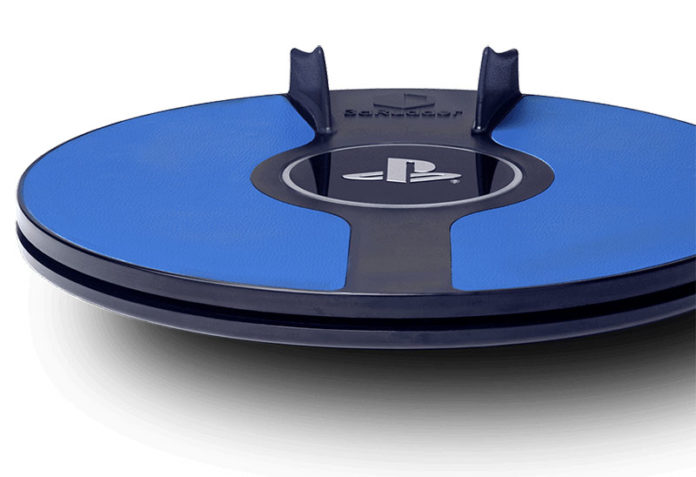VR is its best self when movement feels natural and unrestricted. PC players have long had access to third-party applications like Natural Locomotion, which simulates arm-swinger movement. Though it does require some configuration, the app works wonders for your PC experience, and we highly recommend it. PSVR players now have something new and exciting to look forward to with 3dRudder.
 On PlayStation, where there is less room for modifications to existing games, peripherals do the work. The Aim remote, for example, uses an analog stick for motion like a traditional first-person game.
On PlayStation, where there is less room for modifications to existing games, peripherals do the work. The Aim remote, for example, uses an analog stick for motion like a traditional first-person game.
The 3dRudder aims to change all of that. The small disc acts like a balance board offering a complete range of motion.
How it Works
The 3dRudder debuted at CES 2019. Players sit on a stool, or a couch, and place their feet on a small platform. If it sounds familiar, we wrote about a Cybershoes, which has a similar design. 3dRudder a one-size fits all style device, so those with smaller or larger feet may need to situate themselves first. Guide rails along the device help prevent feet from sliding over the face of it, and the platforms grip your shoes for traction. You can slide the board to the left or right, tilt it forward or back, and utilize some diagonal motions.
The device doesn’t mount to the floor, and it’s not meant for standing on. It’s a tilting disc, designed to move just slightly as your feet press down or rotate. It originally debuted in 2017 as a method to make PC and Xbox gaming more accessible, with VR as a nice side effect.
Now the device is set to be the next must-have for PSVR players. It offers the chance to get physical in VR, reduce motion sickness and provide a smoother experience overall. It’s also got big-name support behind it in the form of Sairento and Wizards. Both are VR ground-up experiences. Add Skyrim or Farpoint to this mix, and the device becomes a must have.
[youtube https://www.youtube.com/watch?v=N_T7DDzeCxk&w=560&h=315]
At a moderately priced $99-$119 (the latter being pricing for PSVR), the 3dRudder is both affordable and useful. It adds a much needed tactile experience to locomotion.
Too Many Peripherals?
The PSVR has a multitude of peripherals. Those who play its shooting titles can equip themselves with two move controllers and an Aim for specific claims. The upcoming Borderlands 2 seems to be feature-packed for that sort of usability. So, it’s worth asking whether there are too many peripherals for the device.
As a Nintendo fan, I can safely say no. There can always be more peripherals.
But as a fan of VR, I’m also excited to see new technology and more competition in the locomotion space. We’ve covered a few upcoming solutions, including CyberShoes and the Alto 100 omnidirectional balance board.

As these devices are tested and come to market, and as prices dip, the locomotion experience in VR will improve. Locomotion unlocks VR’s real potential, so while there may be a lot of experimentation here, it’s all worthwhile.
The ideal solution for locomotion will completely change the landscape of VR, delivering on the promised experience of your body as the controller.
Final Thoughts
PC players have had access to this device for some time, and the full list of supported games is more than 20 titles. PSVR may take some time to get to that volume. Initial support is good but could be stronger. The device is priced right, I think, and there’s a good chance that bigger titles like Borderlands 2 will help sway people in this direction (no pun intended).
Overall, 3dRudder is an affordable peripheral for those who want to dabble in balance board locomotion.
It’s a new and novel form of movement, and I’m interested to see how or if it becomes the standard for home-based VR.


